Copenhagen is Denmark’s capital, where the sights are many and the distances small. Copenhagen is also the largest city in Scandinavia and the center of the Øresund region, which has developed rapidly in Denmark and Sweden since the opening of the Øresund Bridge in 2000.
Copenhagen’s medieval profile with the many beautiful towers is unforgettable, and a stroll or sailing through the city is very evocative and a must during a visit. Also, walk through the small streets and alleys that often provide surprising views of the famous and new sights.
Tivoli, Nyhavn and The Little Mermaid will be at most tourists’ level, but here are also many other things such as the political Christiansborg Castle, the Royal Amalienborg Castle and beautiful churches with the Marble Church, Copenhagen Cathedral and Holy Spirit Church as some of the best known.
Gastronomically, culturally and in terms of shopping, Copenhagen offers a number of good experiences. Visit, for example, the State Museum of Art, Rosenborg and the Glyptoteket and enjoy a relaxing hike with cafes and shopping on Strøget.
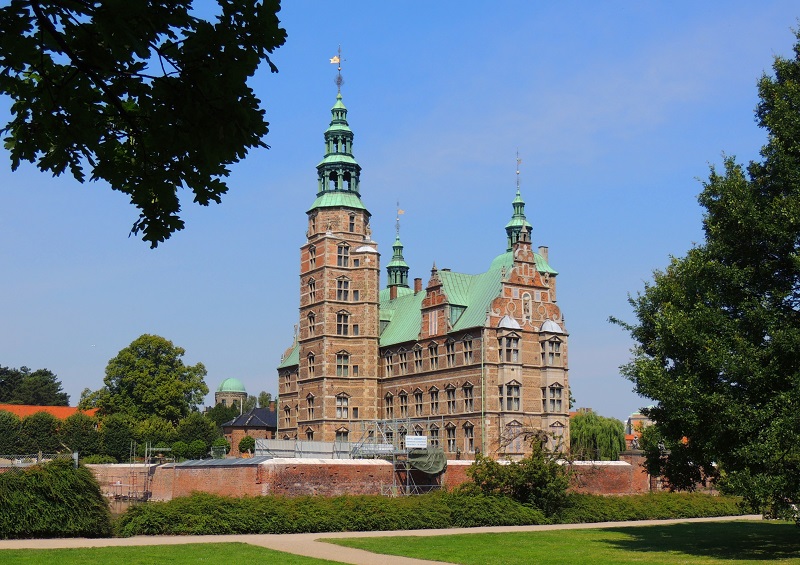
Rosenborg Castle is a pleasure castle that King Christian IV built in 1606-1634 in this place, which at the time was outside the city walls and thus closest to the country, despite the proximity to the Danish capital. The castle is today open as a museum, where you can see the Danish crown jewels.
The National Museum is Denmark’s state-run, cultural-historical museum, and the beginning of it was the Royal Chamber of Art, founded by King Frederick III in the mid-1600s. Today, the museum’s headquarters are in the Prince’s Palace, and you can see distinguished collections here.
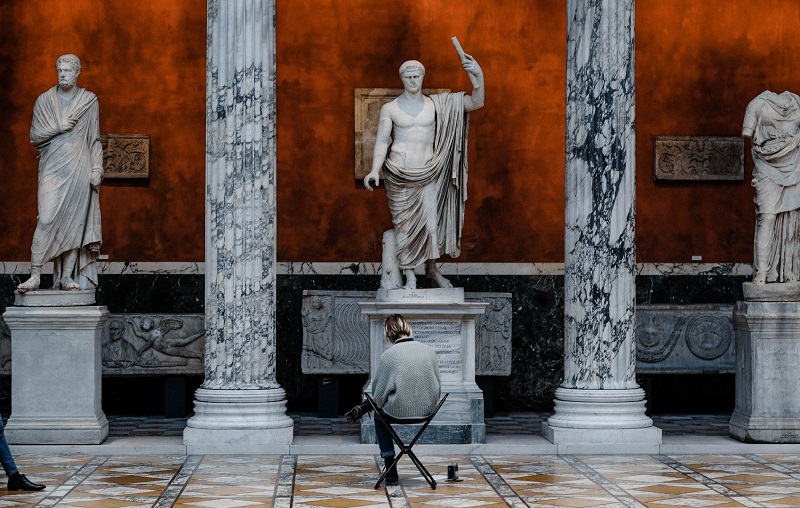
This is one of Copenhagen’s leading museums. It was built in 1897-1906 by Carlsberg’s brewer Jacobsen to accommodate his private art collection. Since then, the collection has grown with many fine works such as Egyptian mummies.
The Copenhagen Stock Exchange building was built by King Christian IV in 1619-1640 as a large market hall. The building is lavishly decorated in Renaissance style and known for the characteristic, winding dragon tower.
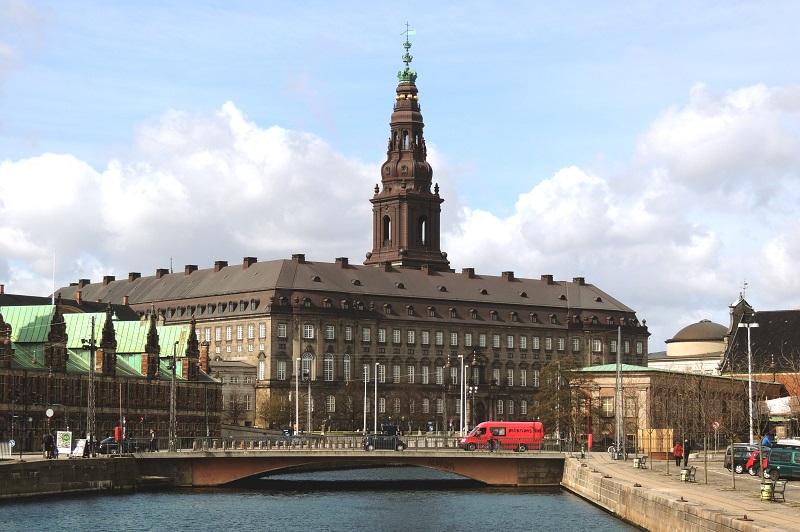
The current, impressive castle was built in 1907-1928 according to Thorvald Jørgensen’s drawings as the third Christiansborg. The tower is a central element and reaches a height of 103 meters high, which makes it Copenhagen’s tallest tower.
Thorvaldsen’s Museum was built in 1839-1848 according to Thorvald Bindesbøll’s drawings; the style is Danish classicism. The museum houses the world famous sculptor Bertel Thorvaldsen’s works.
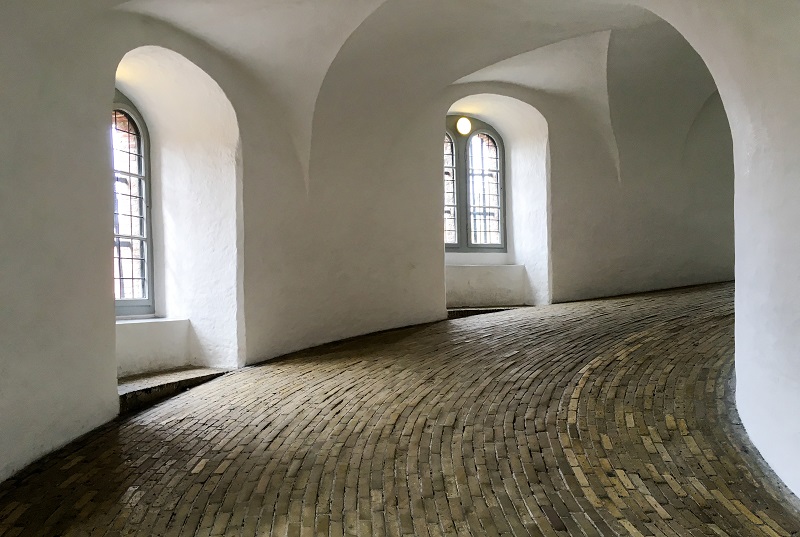
The Round Tower and Trinity Church buildings were built under King Christian IV. Construction of the complex started in 1637 and the tower was completed in 1642. Round Tower is known for the winding corridor that leads from street level and all the way up under the viewing platform, from where there is a fantastic view of Copenhagen.
The 60 meters/196 feet high and 83 meters/292 feet long Church of Our Lady is a cathedral in the Copenhagen Diocese and thus the main church in the Danish capital. The architecture is classicist, and in the church you can see many beautiful sculptures by Bertel Thorvaldsen.
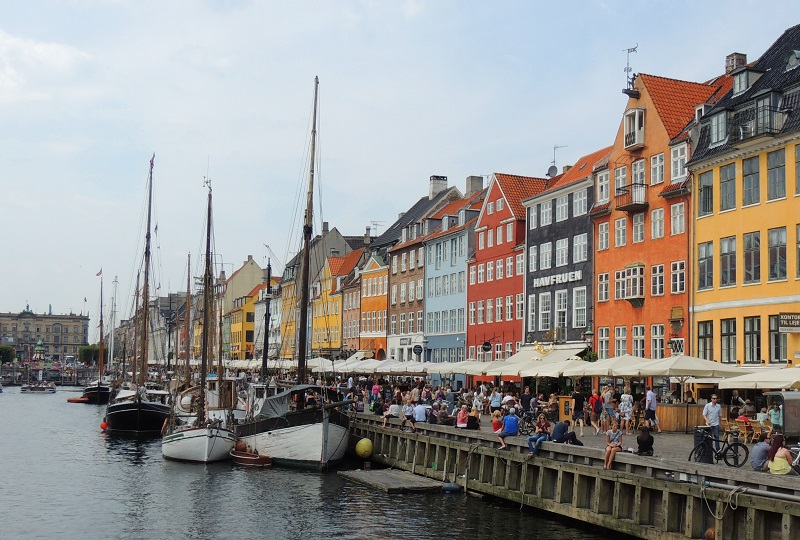
This is the street with the cozy atmosphere of the Nyhavn canal. It is very famous and always attracts many Copenhageners and tourists. H.C. Andersen lived at two addresses in the street, which previously had a rather bad reputation.
The foundation stone of Frederik’s Church, often called simply the Marble Church, was laid by King Frederick V in 1749. It is one of Copenhagen’s most monumental works and was built with Europe’s third largest church dome.
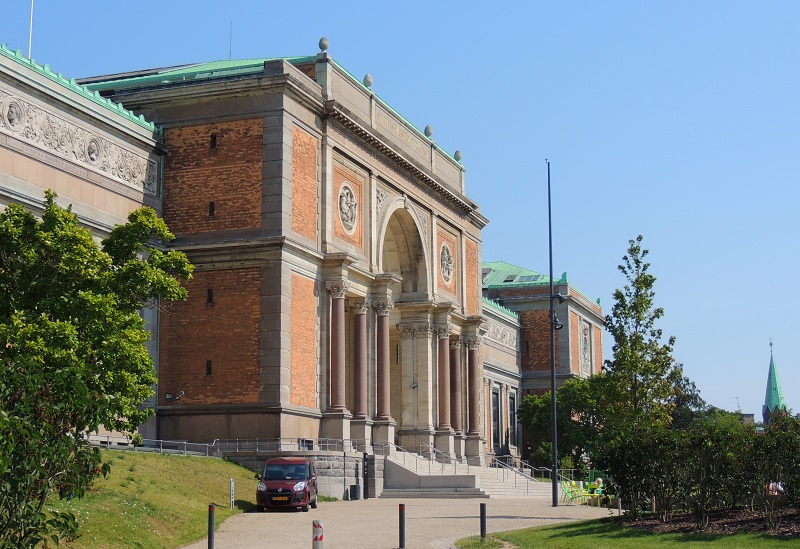
This art museum is the National Gallery of Denmark, and it contains Danish and international art from the 1300s to the present day. You can experience fine collections from i.a. so called Denmark’s golden age in the 19th century.
The world famous Little Mermaid is a sculpture made by Edvard Eriksen in 1913. It is made as an illustration of HC Andersen’s fairy tale, and the mermaid is one of Copenhagen’s most visited spots.
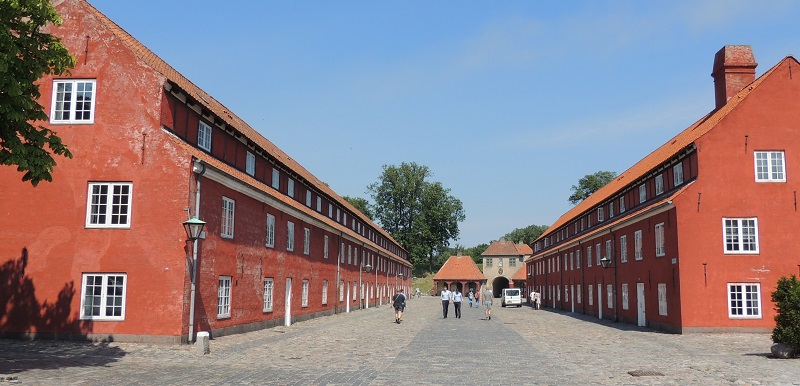
Kastellet is a unique well-preserved fortress, founded in 1624 by King Christian IV as Saint Annæ Skanse. The entire facility is preserved with ramparts, bastions, buildings and one of the historic mills. It is a true oasis in the city center.
Amalienborg Castle is the residence of the Danish royal family and has been there since the Christiansborg fire in 1794. The castle complex is one of Europe’s finest Rococo buildings, and it consists of four almost identical mansions around the castle square, where you can see an equestrian statue of King Frederik V.
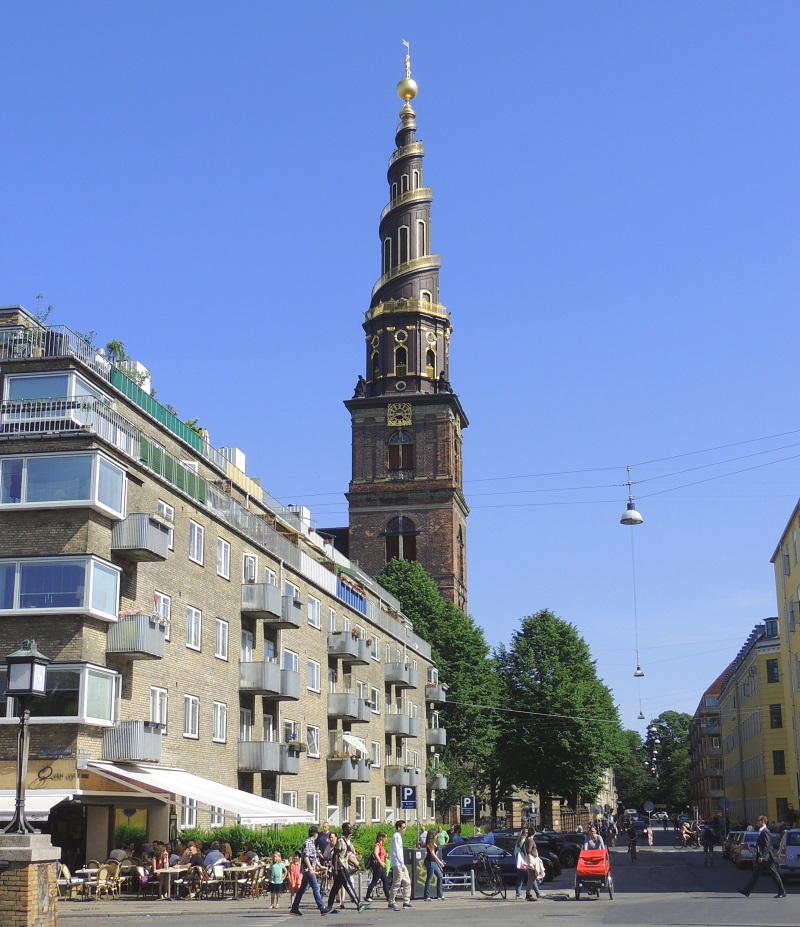
The present Church of Our Savior was built in the Dutch Baroque style from 1682-1696. The church is especially known for its outside spider staircase on the 86-meter-high tower. where can can go all the way to the top with excellent panoramic views as a reward.
City Hall Square is Copenhagen’s central square, and here lies the city’s imposing town hall, built in Martin Nyrop’s national-romantic style inspired by the Italian Renaissance in the period 1892-1905.
Christiansborg Castle Church today stands in classicism from the 19th century, but the ecclesiastical history of Christiansborg and Copenhagen Castle extends back to Bishop Absalon’s castle.
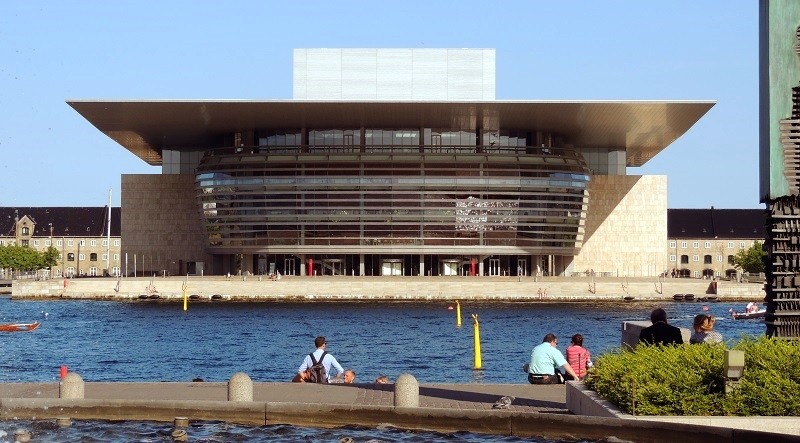
Operaen is the name of the Royal Theater’s opera house on the islands of Holmen. The opera was built and donoted to the Danish state by shipowner Maersk McKinney-Møller. It is know for a beautiful interior with the grand foyer.
The pedestrian zone named Strøget is Copenhagen’s famous business district. It consists of several street and with its combined length, it is considered one of the world’s longest pedestrian streets. You can walk Strøget between the squares Rådhuspladsen and Kongens Nytorv.
The history of the Church of the Holy Spirit goes back to the end of the 13th century, when Bishop Johannes Krag founded the Holy Spirit House as a secular hospital for the poor sick or lonely elderly citizens. The church is newer, while the House of the Holy Spirit from 1296 is one of the city’s oldest buildings.
In 1619, King Christian IV established a naval church in Frederick II’s old anchorage. It was rebuilt in the typical Renaissance style, like many of Christian IV’s buildings.
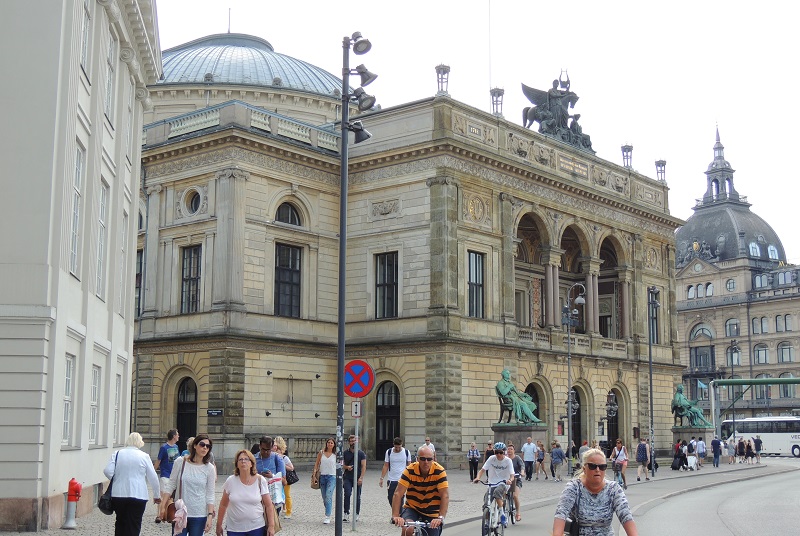
The Royal Theater is Denmark’s most famous theater scene. Vilhelm Dahlerup’s theater building was built in 1872-1874 as a replacement for the former theater from 1748.
A harbor cruise is a great opportunity to form an overview of the relatively large, interesting area around the harbor race and along the canals at island Amager and around the centrally located island of Slotsholmen.
The Botanical Garden is located in Copenhagen’s so called green belt, which used to be the city’s ramparts and moat. The garden belongs to the University of Copenhagen and is a nice recreation area close to the city center. You can many beautiful plants and a large palm house.
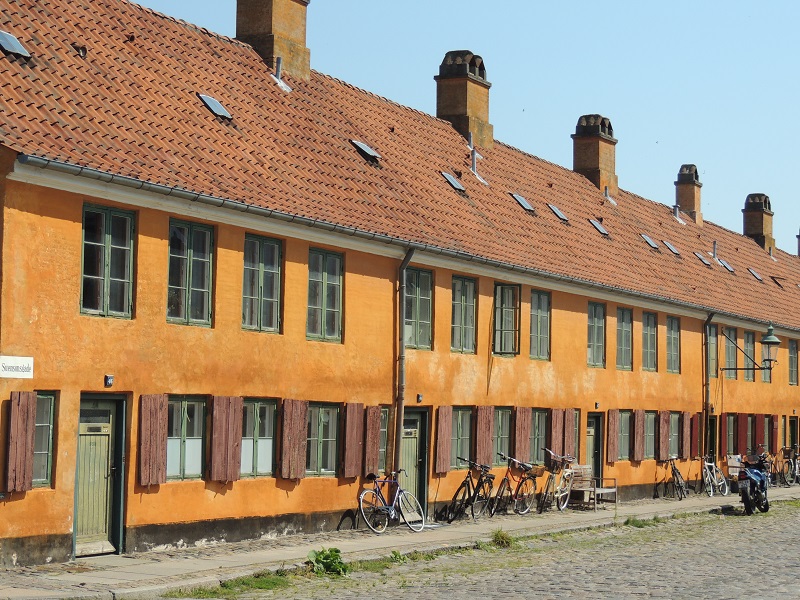
King Christian IV had the charming rows of houses in Nyboder built in the years 1631-1641 as the world’s first terraced houses. The beautiful houses are preserved with their special atmosphere and with exotic street names such as Crocodile Street.
Copenhagen Central Station was inaugurated in 1911, and the major railway stations are the Nordic region’s leading example of the magnificent railway buildings of the time.
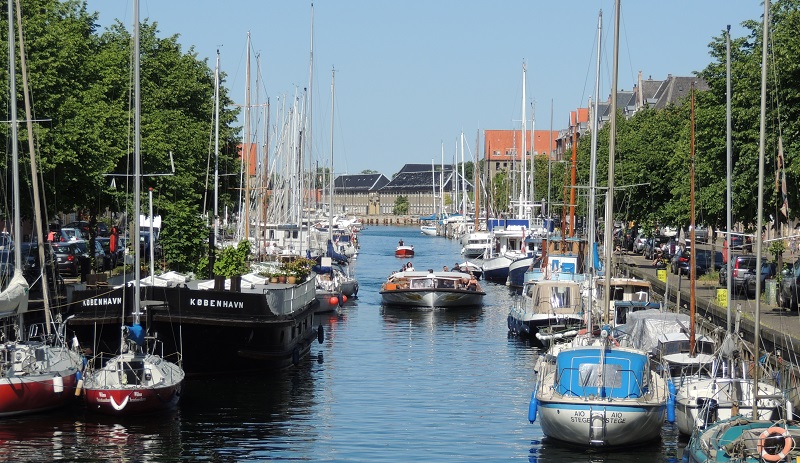
Christianshavns Kanal is dug and built at the same time as the Christianshavn district; that is, during the time of King Chistian IV in the 17th century. The canal cuts through the district and is among Copenhagen’s coziest urban spaces.
Tivoli is Copenhagen’s lovely amusement park from 1843 and an absolute must when visiting the Danish capital. The amusement park contains restaurants, concert stages, beautiful flower arrangements and of course amusements for young and old.
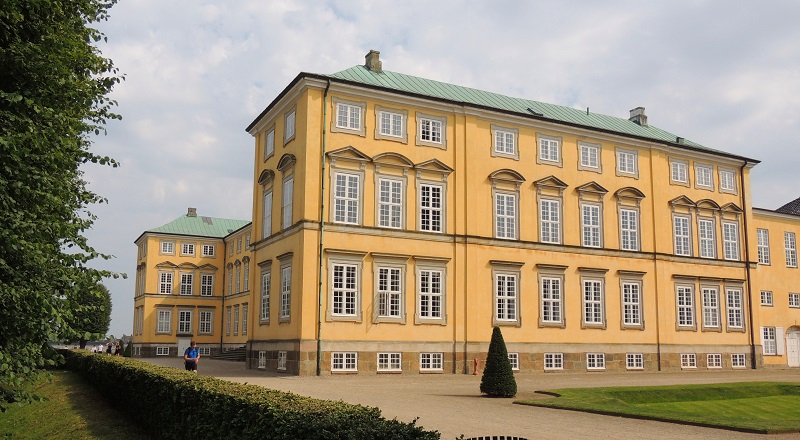
Frederiksberg Castle was built as a summer castle in the period 1699-1703 by King Frederick IV, who was inspired by the construction in Italy especially. Together with the surrounding parks, Frederiksberg Have and Søndermarken, the castle makes one of the city’s largest recreational areas.
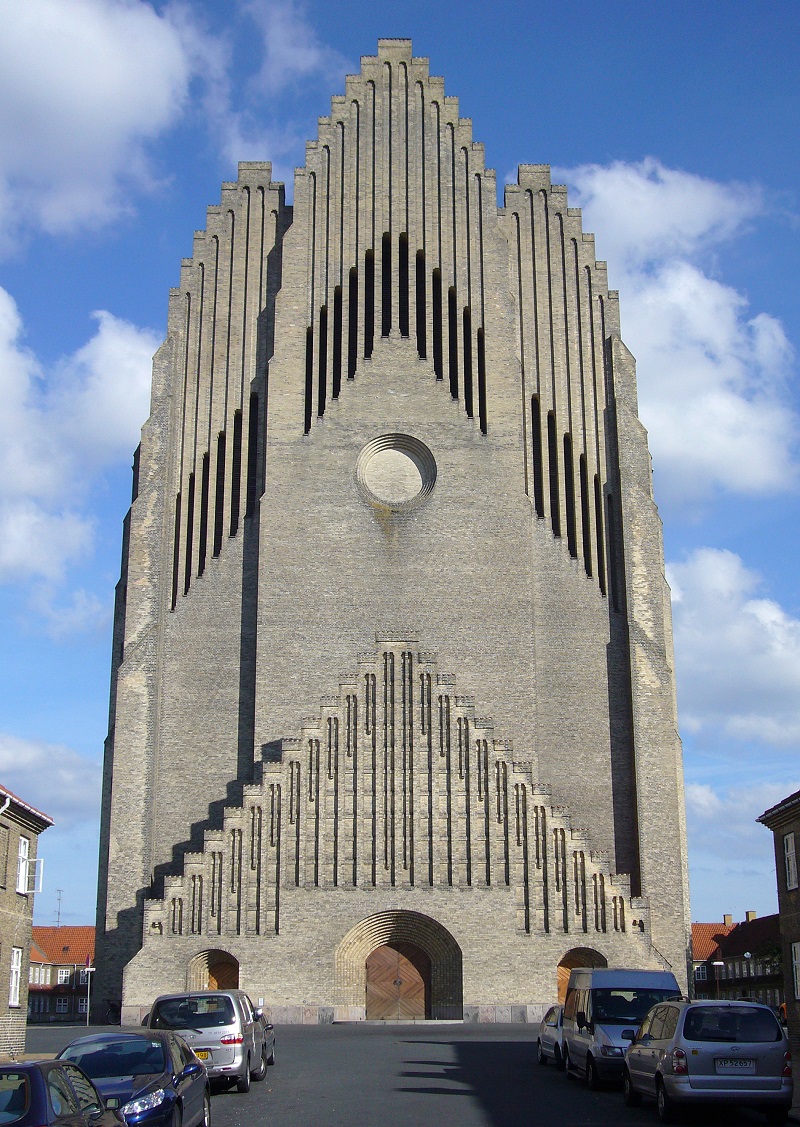
This majestic church is one of Copenhagen’s newer, major sights. The foundation of Grundtvig’s Church was laid in 1919, and the church was inaugurated in Kåre Klint’s design in 1940. The church is a modern edition of Gothic European cathedrals.
Frederiksborg Castle is one of the most beautiful sights in Northern Europe and is one of the world’s most lovely and harmonious castles. The castle itself and the sumptuous castle church are now museums, and you must also see the castle park with the famous baroque garden and English landscape gardens.
Fredensborg Castle was built in the Baroque style in 1719-1724 by King Frederick IV, but it was later expanded. The castle is named after the end of the Great Nordic War, which ravaged the early decades of the 18th century.
Louisiana is the famous museum of modern art that opened its doors in 1959. The collections include both Danish and international art, including works by Picasso and Andy Warhol.
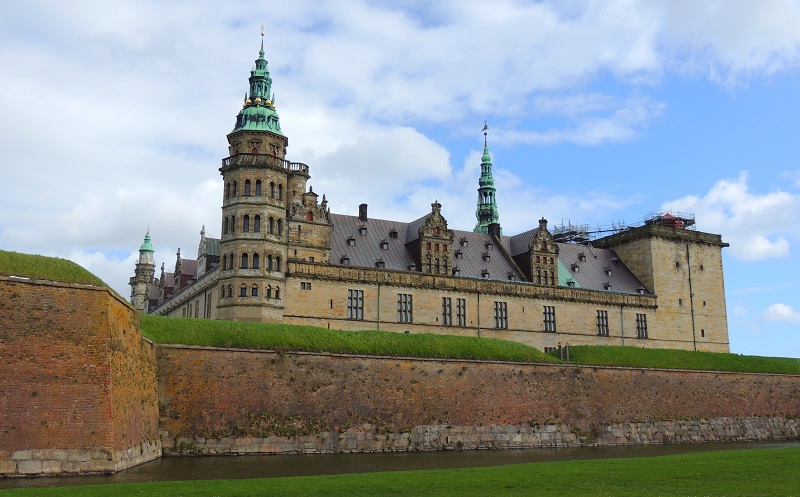
Kronborg Castle is one of Denmark’s national symbols and known throughout the world as Hamlet’s Castle. The location with the water on three sides is very beautiful and the bourgeoisie is one of Denmark’s most beautiful and impressive.
In Roskilde you can see the impressive Roskilde Cathedral, which with its majestic twin towers rises above the rest of the city. It is one of the largest churches in the country and is included in the UNESCO World Heritage List. Countless royal and queen tombs can be seen in the church.
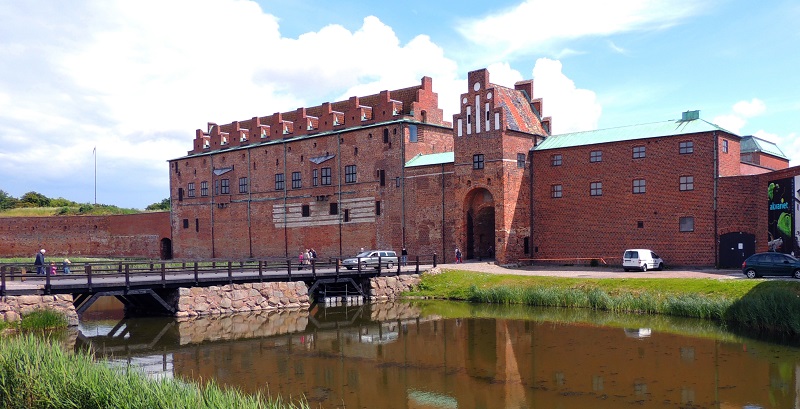
In the Øresund region, Swedish Malmö is Copenhagen’s sister city, and here are many sights to enjoy. On the way to the city you can experience the trip over the Øresund Bridge, and in Malmö there are both things to see from Skåne’s Danish and current Swedish times. Most famous is the Malmøhus Castle and the twisted skyscraber, Turning Torso.
Reberbanegade
amagercentret.dk
Arne Jacobsens Allé 12
fields.dk
Kalvebod Brygge 59
fisketorvet.dk
Falkoner Allé 21
frederiksberg-centret.dk
Østergade 52
illum.dk
Kongens Nytorv 13
magasin.dk
Lygten 21
noerrebrobycenter.dk
Bomuldsgade 4
spinderiet.dk
Frederiksborggade 21
torvehallernekbh.dk
Tuborg Havnevej 4-8
waterfront-shopping.dk
Strøget, Kompagnistræde, Läderstræde, Østerbrogade, Vesterbrogade, Nørrebrogade, Amagerbrogade, Bredgade, St. Kongensgade
Bakken
Dyrehaven, Klampenborg
bakken.dk
The Blue Planet
Kastrup
denblaaplanet.dk
Experimentarium
Tuborg Havnevej 7
experimentarium.dk
Experimentarium City
Trangravsvej 10-12
experimentarium.dk
Geological Museum
Øster Voldgade 5-7
geologi.snm.ku.dk
Teknisk Museum
Fabriksvej 25, Helsingør
tekniskmuseum.dk
Tivoli
Vesterbrogade/Axeltorv
tivoli.dk
Tycho Brahe Planetarium
Gl. Kongevej 10
planetarium.dk
Zoo
Roskildevej 32
zoo.dk
Zoological Museum
Universitetsparken 15
zoologi.snm.ku.dk
In the Copenhagen area, settlements have existed for more than 6,000 years, and from around the year 700 there was a permanent fishing village in the place that today forms the center of the city. Traces of boat bridges have been found at Gammel Strand, and the remains of a Viking farm have been excavated around Kongens Nytorv.
It is believed that the harbor of the fishing camp was around today’s Vingårdsstræde and that from here they were fished for herring and sailed to Skåne. From the harbor there are roads that ran along what later became the shopping street and the shopping street.
Copenhagen were first mentioned in 1043 with the name Harbor, which was still a rather insignificant village by the sea. As trade in the area increased, not least between Roskilde and the capital Lund in the Danish Skåne, the port gradually grew.
In 1150, King Valdemar the Great granted Bishop Absalon power over the Port, and in 1167 he founded the new castle and with the city of the merchants, Copenhagen. The castle acted both as a residence and as a fort to keep pirates away from the ever-larger city.
Copenhagen’s growing prosperity made the city a new competitor in the Baltic Sea region, and northern German Lübeck attacked the city twice in the 13th century. Both times, Copenhagen was quickly rebuilt. These were also the years when Bishop Erlandsen granted Copenhagen city rights; it happened in 1254.
By 1334, the population had reached 5,000 people, and Gammeltorv was now an important meeting place in the country. The city’s development had also attracted many Germans, which contributed to increased development. In the middle of the century, royal power conquered Copenhagen from the church, but before long it was a downturn for the city.
In 1368, a naval attack from the Hanseatic League, and Copenhagen was destroyed. The city’s castle was also destroyed on that occasion, and after that Copenhagen’s growth was put back for a number of years. The king returned the city to the church in 1375, and the population is believed to have been around 4,000 at this time.
In 1397, Copenhagen became the center of the unified North during the Kalmar Union. It happened when Queen Margrethe I married the King of Norway. She also became the real ruler of Sweden and other areas of the Union. However, Copenhagen was still the city of the church, as it was Roskilde Bishop who decided here.
In 1417, King Erik of Pomerania regained power over Copenhagen from the church, and the city now became the residence of the regents.
Copenhagen was central to the Kingdom, which consisted of Denmark, Norway and Sweden, and the city flourished and quickly also became a military and political center. King Christian I was the first to be crowned in Copenhagen, and he initiated the construction of new buildings and institutions, including Copenhagen Castle and the University, dating from 1479.
The Reformation reached Denmark and Copenhagen in 1536, but in the years before there had been domestic strife, which ended with King Christian III throwing the bishops into prison and proclaiming the Protestant faith which remains the state religion of Denmark.
In 1596, Christian IV was crowned king, and in his reign he made a mark on someone in Copenhagen. Many of the city’s finest buildings have been erected during his time, including Rosenborg, Round Tower, Børsen, Nyboder, the Christianshavn district and the beautiful Frederiksborg Castle.
The area of Copenhagen was almost doubled with the expansion to the north and to Christianshavn, both of which were within the new violence facilities that were established. On the same occasion, the harbor was greatly developed, and to house the many new sailors in the larger fleet, the townhouses in Nyboder were erected.
Unfortunately, Denmark had lost Skåne, Halland and Blekinge in 1658, and as a result, a reign was held in Copenhagen in 1660. At that meeting the nobility was abolished in favor of the monarchy.
Despite the fact that Copenhagen was no longer the center of the kingdom, the city grew steadily, and in the early 18th century 60,000 people lived in the city, all of which were still mainly referred to the small area of the original medieval towns .
The Great Nordic War broke out in the year 1700, and Denmark became allied with Russia’s Peter the Great in the battles against Sweden. A Swedish-English-Dutch fleet defeated and bombed Copenhagen that year, but the city came through the attack without major damage. One consequence of the action, however, was that Denmark withdrew from the war for a time, and Copenhagen’s fortification was expanded to make the city less vulnerable to any recurrence.
In 1711, the city was hit by a plague epidemic in which a third of the population died, and later in the century Copenhagen was hit by two major serious fires, in 1728 and again in 1795, which destroyed large areas of the city. It became the starting point for a large new building of larger stone houses, which can be seen in some of the city’s neighborhoods today.
The destruction of the city continued in 1801 and 1807, with the English Navy bombing Copenhagen from the sea during what is considered the world’s first terrorist bombing.
In 1801, English Lord Nelson had defeated the Danish capital, without any real attack on the city. In 1807, when England wanted to prevent the neutral large Danish fleet from falling into the hands of French Napoleon, the city was besieged from the month of August. A colossal bombardment was launched on September 2, and it lasted until September 5. 1,600 inhabitants died, 300 houses and the city’s tallest church tower were destroyed, along with much else.
Terrorist bombing, among other things, used new rocket types that set fire to the city and hit civilian targets. After the bombing, England seized the Danish fleet and without it Copenhagen could not maintain its leading and lucrative trading position in the Baltic Sea area.
Following the English terrorist bombs in 1807 and the consequent loss of Norway in 1814, Copenhagen merchants no longer had a monopoly on trade in Norway, and with the greatly reduced fleet characterized poor economy and tedious decades after the end of the Napoleonic wars. .
However, the 19th century also became the golden age of Denmark and thereby Copenhagen, where artists and scientists made their mark internationally. HC Andersen, Søren Kierkegaard and Bertel Thorvaldsen were among those who characterized the time.
Throughout the 19th century, Copenhagen generally developed tremendously. Industrialization came to town. Here large shipyards and other industries were built, in 1847 the first railway was built at Roskilde. The city’s medieval ramparts were also closed down, as large new residential areas emerged in the current bridge districts and in Frederiksberg, causing a boom in population.
The King’s residence castle, Christiansborg, was hit by a new fire during the growing season, and the royal family moved to the current regent residence in Amalienborg. Christiansborg stood for a few years as a fire blank, but the large complex was rebuilt in the early 1900s as the country’s new parliament.
At the beginning of the 20th century, Copenhagen’s almost explosive growth continued with the construction of large new suburbs in Zealand and Amager. Copenhagen rounded out 500,000 inhabitants, making it an international metropolis. The city’s new town hall and large landscaped main station were opened every few years and the city plan was modernized.
Copenhagen’s buildings came graciously through World War II, with only a few bombings being made, and this was one of the reasons why the city became a hub for Scandinavia soon after the war; for example, for air traffic, where SAS established its hub at Copenhagen Airport in Kastrup.
Copenhagen’s network of S-trains was continuously expanded in line with the city’s development following the so-called finger plan adopted in 1947. The trams still ran in the city’s streets, but this ceased in 1972, when buses and cars took over the traffic.
The expansion continued through the latter half of the 20th century when new major projects were adopted. This included, for example, the brand new Ørestad and the construction of the Copenhagen subway, whose first line was opened in 2002.
In 2000, Copenhagen became land-fixed with the former Danish areas in present-day Sweden. The Øresund Bridge was built, and the development of Copenhagen and the Øresund area as a central part of the Baltic Sea region was thereby started; and Copenhagen’s position is thus the capital’s historic position up through the first centuries of the city.

Aarhus is atmospheric with lovely pedestrian streets such as the stretch between the city’s main railway station and the cathedral. The attractions are for many people in the same area, from where there is also access to the beautiful and relatively new environment along the city’s river.
The city’s churches also stand as some interesting sights. The cathedral is one of the country’s largest churches, and the neighboring Our Lady exudes medieval character. The contrast from here to the new buildings on the city’s harbor area is great and perspective-like, each of their contemporary architectural gems.
The travel guide to Copenhagen gives you an overview of the sights and experiences in the Danish city. Read about top sights and other sights, and buy a travel guide with tour suggestions and descriptions of all the city’s major churches, monuments, mansions, museums, etc.
Copenhagen is waiting for you, and at vamados.dk you can also find cheap flights and good deals on hotels for your trip. You just select your travel dates and then you get flight and accommodation suggestions in and around the city.
Click the “Put in Shopping Cart” button to purchase the travel guide. You will then be taken to the payment, where you enter the purchase and payment information. After completing the wizard payment, you will immediately receive a receipt with a link to download your purchase. You can download the wizard immediately or use the download link in the email later.
When you buy the travel guide to Copenhagen, you get the book online so you can have it on your mobile, tablet or computer – and of course you can choose to print it. Use the maps and tour suggestions and you will have a good and content-rich journey.
Fairytales • Nyhavn • Tivoli Gardens • Rosenborg • The Little Mermaid

Aarhus is atmospheric with lovely pedestrian streets such as the stretch between the city’s main railway station and the cathedral. The attractions are for many people in the same area, from where there is also access to the beautiful and relatively new environment along the city’s river.
The city’s churches also stand as some interesting sights. The cathedral is one of the country’s largest churches, and the neighboring Our Lady exudes medieval character. The contrast from here to the new buildings on the city’s harbor area is great and perspective-like, each of their contemporary architectural gems.
The travel guide to Copenhagen gives you an overview of the sights and experiences in the Danish city. Read about top sights and other sights, and buy a travel guide with tour suggestions and descriptions of all the city’s major churches, monuments, mansions, museums, etc.
Copenhagen is waiting for you, and at vamados.dk you can also find cheap flights and good deals on hotels for your trip. You just select your travel dates and then you get flight and accommodation suggestions in and around the city.
Click the “Put in Shopping Cart” button to purchase the travel guide. You will then be taken to the payment, where you enter the purchase and payment information. After completing the wizard payment, you will immediately receive a receipt with a link to download your purchase. You can download the wizard immediately or use the download link in the email later.
When you buy the travel guide to Copenhagen, you get the book online so you can have it on your mobile, tablet or computer – and of course you can choose to print it. Use the maps and tour suggestions and you will have a good and content-rich journey.

The present Church of Our Savior was built in the Dutch Baroque style from 1682-1696. The church is especially known for its outside spider staircase on the 86-meter-high tower. where can can go all the way to the top with excellent panoramic views as a reward.
City Hall Square is Copenhagen’s central square, and here lies the city’s imposing town hall, built in Martin Nyrop’s national-romantic style inspired by the Italian Renaissance in the period 1892-1905.
Christiansborg Castle Church today stands in classicism from the 19th century, but the ecclesiastical history of Christiansborg and Copenhagen Castle extends back to Bishop Absalon’s castle.

Operaen is the name of the Royal Theater’s opera house on the islands of Holmen. The opera was built and donoted to the Danish state by shipowner Maersk McKinney-Møller. It is know for a beautiful interior with the grand foyer.
The pedestrian zone named Strøget is Copenhagen’s famous business district. It consists of several street and with its combined length, it is considered one of the world’s longest pedestrian streets. You can walk Strøget between the squares Rådhuspladsen and Kongens Nytorv.
The history of the Church of the Holy Spirit goes back to the end of the 13th century, when Bishop Johannes Krag founded the Holy Spirit House as a secular hospital for the poor sick or lonely elderly citizens. The church is newer, while the House of the Holy Spirit from 1296 is one of the city’s oldest buildings.
In 1619, King Christian IV established a naval church in Frederick II’s old anchorage. It was rebuilt in the typical Renaissance style, like many of Christian IV’s buildings.

The Royal Theater is Denmark’s most famous theater scene. Vilhelm Dahlerup’s theater building was built in 1872-1874 as a replacement for the former theater from 1748.
A harbor cruise is a great opportunity to form an overview of the relatively large, interesting area around the harbor race and along the canals at island Amager and around the centrally located island of Slotsholmen.
The Botanical Garden is located in Copenhagen’s so called green belt, which used to be the city’s ramparts and moat. The garden belongs to the University of Copenhagen and is a nice recreation area close to the city center. You can many beautiful plants and a large palm house.

King Christian IV had the charming rows of houses in Nyboder built in the years 1631-1641 as the world’s first terraced houses. The beautiful houses are preserved with their special atmosphere and with exotic street names such as Crocodile Street.
Copenhagen Central Station was inaugurated in 1911, and the major railway stations are the Nordic region’s leading example of the magnificent railway buildings of the time.

Christianshavns Kanal is dug and built at the same time as the Christianshavn district; that is, during the time of King Chistian IV in the 17th century. The canal cuts through the district and is among Copenhagen’s coziest urban spaces.
Tivoli is Copenhagen’s lovely amusement park from 1843 and an absolute must when visiting the Danish capital. The amusement park contains restaurants, concert stages, beautiful flower arrangements and of course amusements for young and old.

Frederiksberg Castle was built as a summer castle in the period 1699-1703 by King Frederick IV, who was inspired by the construction in Italy especially. Together with the surrounding parks, Frederiksberg Have and Søndermarken, the castle makes one of the city’s largest recreational areas.
Similar to Copenhagen Travel Guide